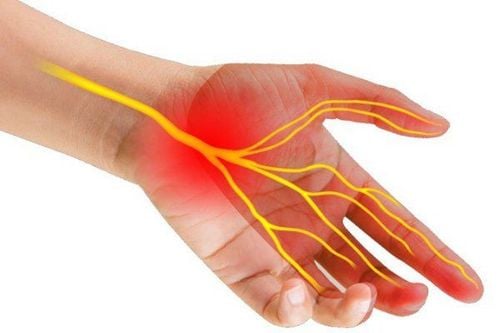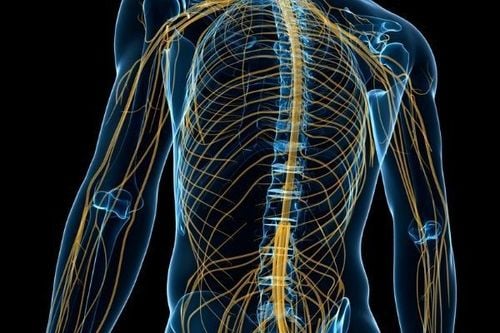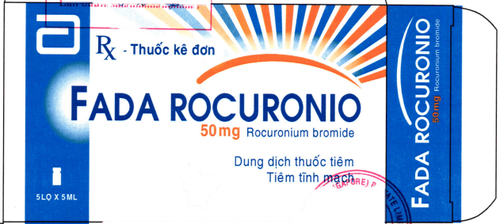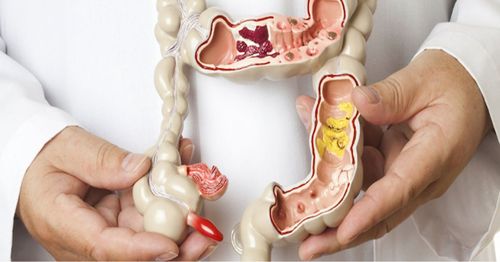This is an automatically translated article.
Posted by Master, Doctor Vu Duy Dung - Doctor of Neurology - Department of General Internal Medicine - Vinmec Times City International Hospital1. Basic Anatomy
The radial nerve is the terminal branch of the posterior brachial plexus. In the axilla, the radial nerve gives three branches, including the posterior brachial cutaneous nerve and the branches that innervate the long and medial ends of the brachial triceps. It then descends with the deep brachial artery between the long head of the triceps and the humerus and passes through the torsion groove between the medial and lateral ends of the triceps. Two sensory branches separate in this region, including the lateral brachial cutaneous nerve, the anterior posterior brachial cutaneous nerve, and the motor branches for the medial and lateral ends of the triceps. After passing through the lateral intermuscular septum, the radial nerve runs between the brachial and rotator cuff muscles immediately anterior to the medial condyle, with branches for the long and short rotator cuff and extensor rotator cuff muscles. The radial nerve then divides into two terminal branches, a superficial sensory branch and a deep branch called the posterior interosseous nerve.
The posterior interosseous nerve passes through the arch of Fröhse, formed by a fibrous dome that originates at the superficial end of the suprapubic muscle at its attachment to the lateral condyle. The posterior interosseous nerve is medial and branches into the superficial and deep ends of the supraclavicular muscles to support the extensors of the wrist and fingers. The superficial sensory branch supplies sensation to the posterior lateral surface of the hand. It is located below the rotator cuff muscle at the elbow and at the base of the forearm as it descends with the radial artery. In the top third of the forearm, the nerve dissociates from the artery and runs shallowly below the rotator cuff tendon. The nerve will then travel between the rotator cuff tendon and the rotator cuff extensor tendon. Further, the nerve penetrates the forearm fascia superiorly and divides into lateral and medial branches and finally the dorsal nerve.
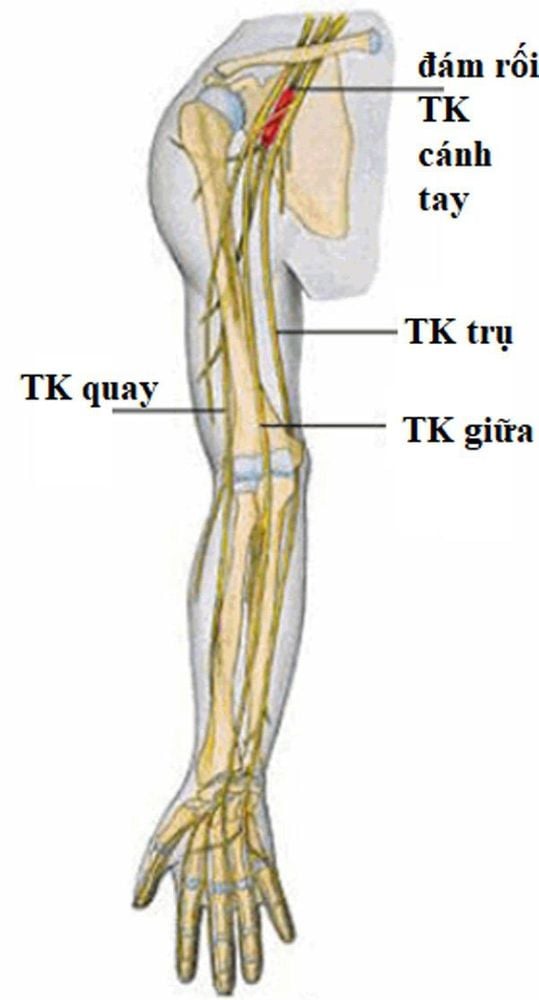
2. Clinical manifestations and physical examination
The most common presentation of radial neuropathy is those of acute compression, commonly known as Saturday night palsy syndrome. In this syndrome, the patient presses the inside of the arm against a hard surface (eg, the arm resting on a chair) during a long, deep sedation, or intoxication. They may wake up with an inability to extend their fingers or wrists (drooping hand). Numbness and paresthesia manifest on the lateral aspect of the hand. Pain in the fissure is relatively uncommon. Symptoms usually go away after 2 to 3 months.
Because of the close relationship between the radial nerve and the humerus, fracture of the humerus is also a common cause of radial neuropathy. Physical examination findings depend on the extent of the fracture. Acute manifestations are easily detected in most cases, but late lesions can be missed. Slow-progressing radial neuropathy may be present in healing fractures because the cannula formation creates nerve trapping or may be related to the hard material used surgically to treat the fracture.
Posterior interosseous syndrome is a purely motor syndrome without associated sensory loss. It is less common than radial compression at the torsion sulcus and is caused by posterior interosseous nerve compression at Fröhse's arch associated with repetitive supine movements, displacement injuries, and trauma. It presents as marked extensor weakness and milder degree of wrist extensor weakness. Wrist extension can be relatively preserved by the radial carpal extensor muscle which is innervated by a branch proximal to the bifurcation of the radial nerve. Since the posterior interosseous nerve is a purely motor nerve, patients will have no sensory symptoms. Patients sometimes have vague symptoms on the back of the forearm, which worsens when the arm is supine. Pain on supination of the forearm against resistance can be used as a elicitation test, but its sensitivity and specificity have not been well established.
Separate lesions of the superficial sensory branch may also occur. They can be caused by local or traumatic compression, as in hand paresthesias (superficial sensory branch compression of the radial nerve at the wrist), or as a rare form of diabetic mononeuropathy. Street . Patients have loss of sensation, sometimes accompanied by unpleasant paresthesias on the lateral aspect of the hand. Sensory examination of the affected area and absence of motor weakness is decisive for the clinical diagnosis.
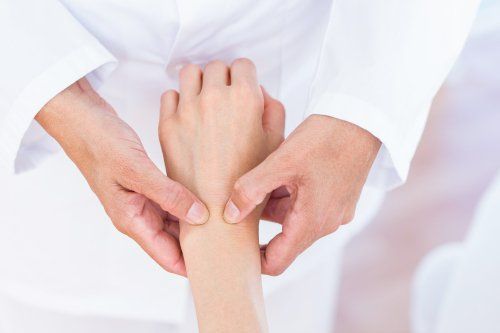
3. Electrodiagnostic probe
Electrodiagnostic exploration of the radial nerve requires needle insertion of nerve conduction and electromyography (EMG). Typically, motor response is recorded in the extensor index finger after stimulation of the forearm, lateral elbow, and fissure. This allows an assessment of potential sites of compression, and special attention should be paid to the CMAP amplitude and dispersion over time. Stimulation at the Erb point is useful for localizing proximal brachial lesions, although simultaneous stimulation of the brachial plexus may interfere with recording. The superficial sensory branch response is valuable for differentiating between common radial and posterior interosseous neuropathy. As with any mononeuropathy, nerve conduction exploration of other upper extremities may be necessary to identify isolated radial nerve damage. Needle insertion EMG can assist in localization and prognosis. The brachial triceps, the rotator cuff, and the rotator cuff extensor are preserved if only the posterior interosseous nerve is involved. On the distal side, the extensor common of the fingers and the extensor of the index finger are tested. Further exploration of nonradial muscles is helpful and is often necessary to rule out brachial plexus disease or cervical radiculopathy as the cause of symptoms.
4. Ultrasound
Neuromuscular ultrasound may also be helpful in diagnosing radial neuropathy. Localized hypertrophy at sites of compression may be useful to localize the lesion. The radial nerve cross-section is usually less than 10 mm2 in the upper arm and anterior fossa of the ulna, with shallow sensory branches only 1 mm2 to 3 mm2. The cross-section of the posterior interosseous nerve is approximately 2mm2. Intriguingly, an increased distal nerve size of the posterior interosseous nerve has been reported in some cases of proximal radial nerve involvement, suggesting a double compression syndrome. Further exploration is needed to determine how these secondary lesions may affect prognosis and treatment. Although peripheral nerve injury is not covered in this article, neuromuscular ultrasonography can be used to determine nerve continuity within hours or days of nerve injury. peripheral, to expedite treatment decisions.
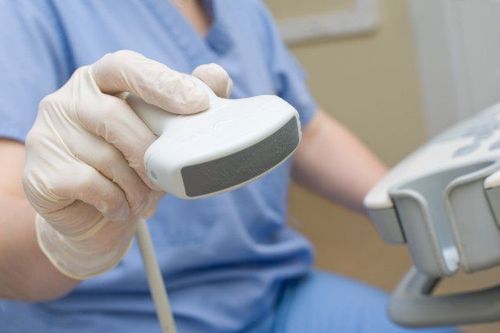
5. Treatment of radial neuropathy
The most common form of acute compressive radial neuropathy (Saturday night paralysis), usually resolves spontaneously without any treatment. These acute compressions cause localized demyelination that resolves spontaneously within 2 to 3 months. Avoiding further compression is recommended during this time. If there is secondary axonal damage, recovery may take longer and be incomplete.
Except for correction of nerve damage from trauma and compression due to space-occupying lesions, surgical intervention in radial neuropathy is uncommon, and there is no standard technique for routine application in decompression. radial nerve.
In patients with posterior interosseous syndrome, anti-inflammatory drugs, rest, and corticosteroid injections are recommended first-line treatment. Superficial surrogacy may be performed in patients for whom conservative treatment has failed. Because of the lack of large prospective trials and the potential for complications, posterior interosseous nerve decompression surgery is not routinely recommended.
Currently, Vinmec International General Hospital has implemented surgery for nerve compression diseases. In particular, with the pioneering of electrical diagnostic techniques. Vinmec is one of the few addresses that deploys specialized techniques, with modern equipment of NATUS (USA), the specialist doctor after performing the examination, recording and reading the results will provide a method to diagnose the disease. accurately, giving patients a chance to recover, safe treatment and no complications.
Please dial HOTLINE for more information or register for an appointment HERE. Download MyVinmec app to make appointments faster and to manage your bookings easily.
References:
Hobson-Webb LD, Juel VC. Common Entrapment Neuropathies. Continuum (Minneap Minn) 2017;23(2, Selected Topics in Outpatient Neurology):487-511.






